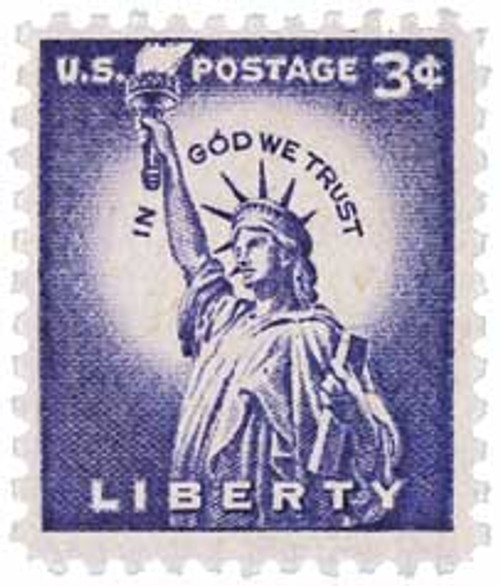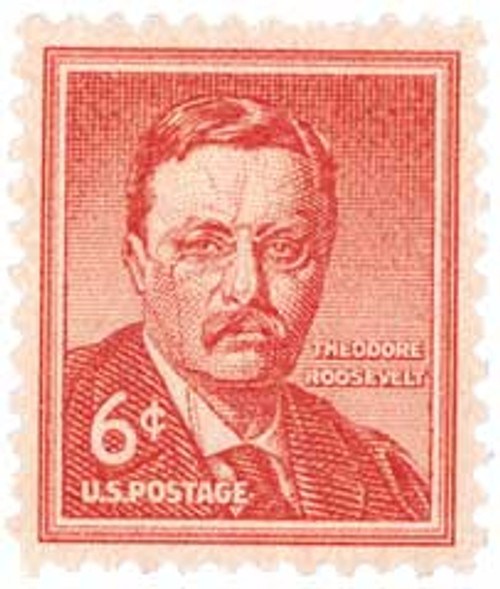
# 1031A FDC - 1960 Liberty Series - 1 1/4¢ Palace of the Governors
Â
1 1/4¢ Palace of the Governors
Liberty Series
City: Santa Fe, NM
Printed by: Bureau of Engraving and Printing
Printing Method: Rotary Press
Perforations: 10½  x 11
Color: Turquoise
Kearny Expedition

On August 18, 1846, Stephen W. Kearny captured Santa Fe without firing a shot as part of the Kearny Expedition.
Stephen Watts Kearny was born in Newark, New Jersey, in 1794. He served with the 13th Infantry Regiment during the War of 1812 and would spend much of the next 30 years serving on the frontier.

During this time, he ordered his men to escort travelers from the Oregon Trail across the plains to avoid Native American attacks. He established a post along the route, which was named in his honor. The post was then moved to the Platte River in central Nebraska and also called Fort Kearny.

When the Mexican-American War broke out in 1846, Kearny was promoted to brigadier general. He was also ordered to lead an expedition from Fort Leavenworth, Kansas, to capture New Mexico and California for the United States. Kearny had a force of about 2,500 men that were marching toward an unknown number of defending Mexicans.
The governor of Santa Fe didn’t want to fight but was convinced by his priests that they should defend the town. They set up positions, but then on August 14, before Kearny and his troops arrived, the governor changed his mind and ordered his men to retreat to Chihuahua.

Kearny and his men reached the town on August 15 but didn’t encounter any Mexican forces. They claimed the New Mexico Territory for the United States without firing a single shot. On August 18, 1846, Kearny declared himself the military governor of the New Mexico Territory and he used the Palace of the Governors as his administrative center. After taking control of Santa Fe, Kearny established a civil government and promised a democratic administration of the area. These actions secured popular support for the US government and its troops.
Kearny then appointed a civil governor and set out for California on September 25 with 300 men. Along the way, he met Kit Carson, who told him California was under American control, so Kearny sent back 200 of his men. But as he continued toward his destination, Kearny encountered another American soldier who said there was a revolt in Los Angeles.

On December 6, Kearny and his force of 100 men encountered a force of about 150 Californio Lancers. The American troops’ powder was wet and so their guns wouldn’t fire. About 18 of his men were killed and the remainder were forced to retreat. Kit Carson managed to sneak away to San Diego and returned with reinforcements. After driving the Californios back, Kearny’s troops and those from California then retook Los Angeles in January 1847.
Â
Â
1 1/4¢ Palace of the Governors
Liberty Series
City: Santa Fe, NM
Printed by: Bureau of Engraving and Printing
Printing Method: Rotary Press
Perforations: 10½  x 11
Color: Turquoise
Kearny Expedition

On August 18, 1846, Stephen W. Kearny captured Santa Fe without firing a shot as part of the Kearny Expedition.
Stephen Watts Kearny was born in Newark, New Jersey, in 1794. He served with the 13th Infantry Regiment during the War of 1812 and would spend much of the next 30 years serving on the frontier.

During this time, he ordered his men to escort travelers from the Oregon Trail across the plains to avoid Native American attacks. He established a post along the route, which was named in his honor. The post was then moved to the Platte River in central Nebraska and also called Fort Kearny.

When the Mexican-American War broke out in 1846, Kearny was promoted to brigadier general. He was also ordered to lead an expedition from Fort Leavenworth, Kansas, to capture New Mexico and California for the United States. Kearny had a force of about 2,500 men that were marching toward an unknown number of defending Mexicans.
The governor of Santa Fe didn’t want to fight but was convinced by his priests that they should defend the town. They set up positions, but then on August 14, before Kearny and his troops arrived, the governor changed his mind and ordered his men to retreat to Chihuahua.

Kearny and his men reached the town on August 15 but didn’t encounter any Mexican forces. They claimed the New Mexico Territory for the United States without firing a single shot. On August 18, 1846, Kearny declared himself the military governor of the New Mexico Territory and he used the Palace of the Governors as his administrative center. After taking control of Santa Fe, Kearny established a civil government and promised a democratic administration of the area. These actions secured popular support for the US government and its troops.
Kearny then appointed a civil governor and set out for California on September 25 with 300 men. Along the way, he met Kit Carson, who told him California was under American control, so Kearny sent back 200 of his men. But as he continued toward his destination, Kearny encountered another American soldier who said there was a revolt in Los Angeles.

On December 6, Kearny and his force of 100 men encountered a force of about 150 Californio Lancers. The American troops’ powder was wet and so their guns wouldn’t fire. About 18 of his men were killed and the remainder were forced to retreat. Kit Carson managed to sneak away to San Diego and returned with reinforcements. After driving the Californios back, Kearny’s troops and those from California then retook Los Angeles in January 1847.
Â

















